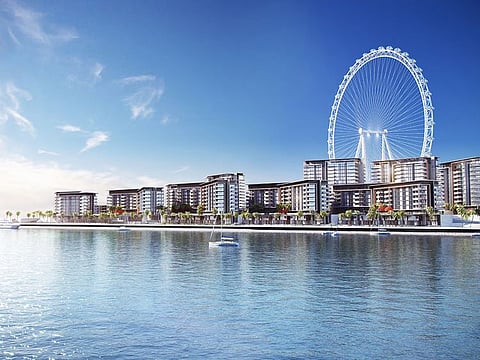UAE Fine Living: Diversification: The answer to success in a pandemic
Investing in multiple property assets across several entry points is a winner

So, there’s the popular adage, don’t put all your eggs into one basket, but then there’s a push for what the world popularly calls as specialisation.
What are we to do? Do we concentrate on a niche or broaden our horizons and expand areas of interest? This dichotomy also exists in investing, as investors try to balance specialisation and diversification.
The pandemic prompted the trend of people preferring to live in villas, with families also choosing to migrate from densely populated city centres towards the suburbs, as well as serene waterfront developments. Naturally, prices for villa and townhouses registered an upward trend in the past seven months

But it also exists as far as real estate developers are concerned – where some prefer to concentrate in a particular asset class, price segment or geography, and then get labelled as niche or boutique developers, while others, such as Dubai Holding Real Estate (DHRE) believe in the firm benefits of diversification for risk mitigation.
Diversification works best by investing into multiple assets at various profitable entry points. Whether it is residential real estate, retail, commercial office properties, or even land, diversification of a developer’s portfolio translates into rapid creation of profits and lowers the risk of over-exposing a certain asset class to a specific geography, price segment, or demographic.
By spreading projects across different asset classes, developers like DHRE, sustain the brand image across our entire portfolio, thereby building strong investor confidence. Owing to the cyclical shifts of the market, developers may witness changes in rental demand and occupancy at different points. With assets across multiple market segments, we reduce the risks that arise from one centralised market.
And there’s no better time to witness the immense benefits of an immensely diversified product and portfolio offering, than now.
The pandemic prompted the trend of people preferring to live in villas, with families also choosing to migrate from densely populated city centres towards the suburbs, as well as serene waterfront developments. Naturally, prices for villa and townhouses registered an upward trend in the past seven months. In the second quarter villas spearheaded the surge in Dubai’s residential property value with a rise of 7 per cent when compared to the previous quarter and an annual gain of 6.3 per cent, according to the Valustrat Price Index.
By having a real estate offering for every customer segment, we at DHRE limited the impact of volatility on our portfolio.
As a master developer, DHRE has leveraged its expertise and diversified its portfolio across numerous urban, suburban, and waterfront locations in the city across different price points and customer segments in the emirate. Our extensive land portfolio offers institutional investors the opportunity to curate the city’s landscape by developing residential, commercial, retail real estate, as well as hospitals, schools, and hotels.
We have invested in the legacy of building well known destinations and prominent landmarks, while also creating well designed and coveted lifestyle experiences for Dubai’s residents from different nationalities, taste, income brackets and preferences. The variety of our asset classes in different locations in Dubai is part of our strategy to provide unparalleled investment opportunities and holistic living experiences across the emirate.
Moving forward, it seems obvious that putting all your eggs in one basket, is no longer an option and the only strategy that will shelter developers from the uncertainties of a volatile market is to diversify.
— The author is Chief Commercial Officer, DHRE
Sign up for the Daily Briefing
Get the latest news and updates straight to your inbox



